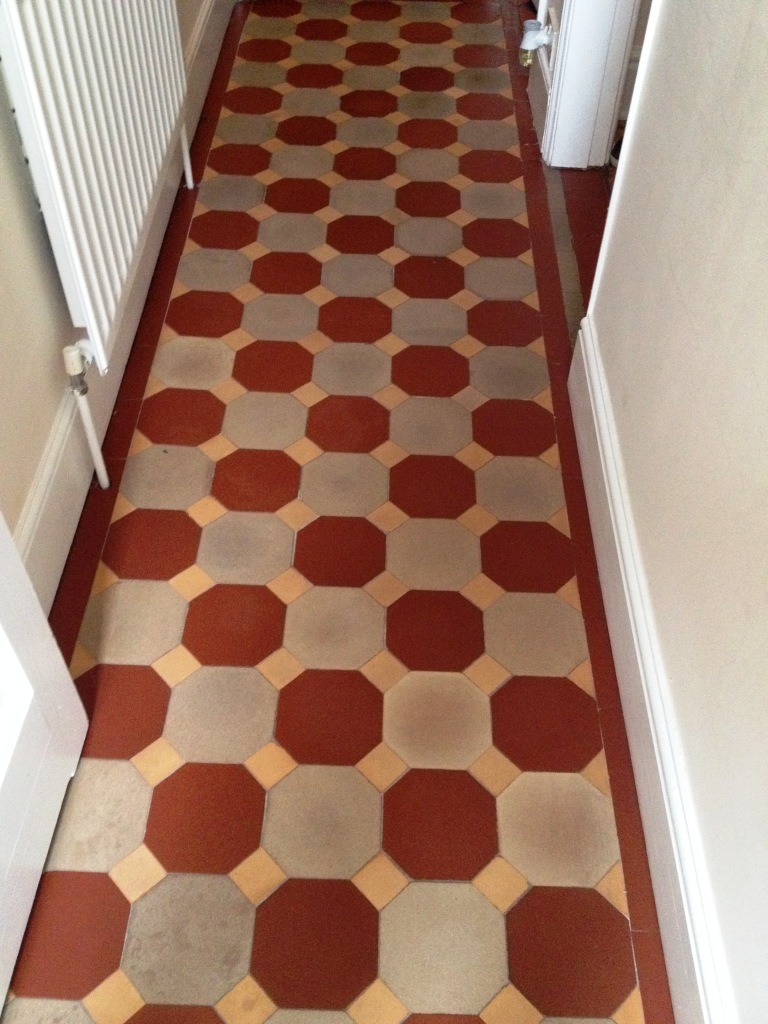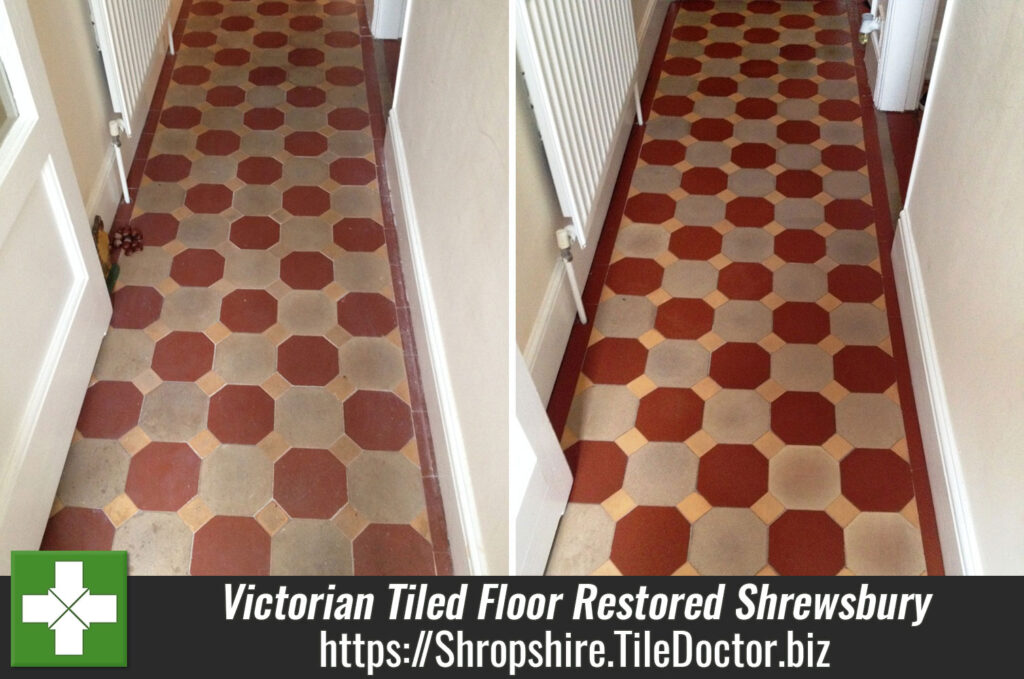Details below of a red and black Quarry tiled floor at a house belonging to a customer in the Shropshire market town of Shrewsbury, which dates back to medieval times. The owner had recently moved back to the area and purchased the house with the intention of restoring all its original features including the Quarry tiles floor which had several coats of red floor paint and had been covered with carpet for several years, I guess the previous owner wasn’t sure what else to do with it.



Cleaning a Quarry Tiled Floor
There was cement based building residue, plaster and efflorescence on the floor so I decided to treat the floor with a strong dilution of Tile Doctor Remove and Go which was left to soak into the tiles for a while before being scrubbed in using a rotary machine fitted with a black pad; the resultant slurry was washed away using more water and a wet vacuum.
The whole process was repeated until I was satisfied that any stubborn areas had been dealt with and then the floor given an acid wash with Tile Doctor Grout Clean-up to remove the efflorescence.
Once I was happy with the condition it was given a final rinse to remove any trace of cleaning products and then left to dry for four days.
Sealing a Quarry Floor Sealing
The tiles have to be dry before sealing and after testing the floor with a damp meter I confirmed that four days has been sufficient and the floor was indeed dry. The next step was to apply three coats of Tile Doctor Colour Grow which is an impregnating sealer that occupies the pores in the tile and enhances the natural colour of the tiles in the process.




Sealers protect your floor from staining and enhance the appearance of the stone, however they do wear down over time depending on floor traffic and what products are used to clean the floor (don’t use anything even mildly acidic) and this is when dirt can become ingrained in the stone, so if you do want to keep your floor looking its best talk to Tile Doctor their regular maintenance service that will ensure your sealer is kept topped up.